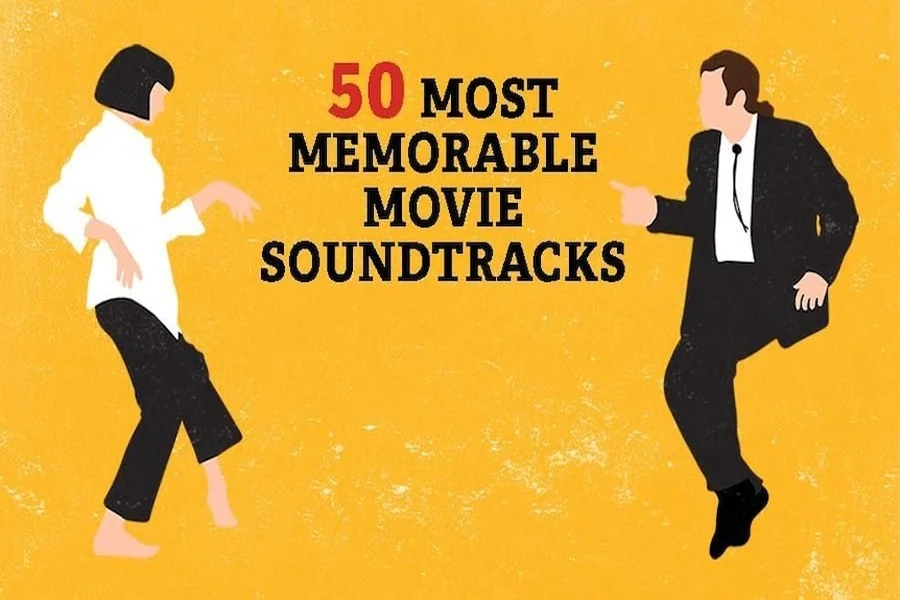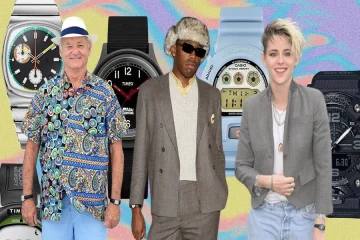When we think of iconic movies, many of us immediately recall the visual scenes, the characters, and the gripping plotlines. However, a significant aspect of any movie that often goes unnoticed is the soundtrack—the music that plays behind the scenes, shaping the emotions, mood, and atmosphere of the film. From the sweeping orchestral scores of epic blockbusters to the more subtle, modern beats of indie films, the soundtrack is an essential part of the cinematic experience.
Soundtracks do more than just provide background music; they are integral to how a film communicates with its audience. Whether it’s heightening the tension in a thriller, evoking a sense of nostalgia, or underscoring a character’s emotional journey, the right soundtrack has the power to elevate a movie into something much more immersive. In this article, we will explore why movie soundtracks are so crucial to the cinematic experience, the relationship between music and storytelling, and how soundtracks have become a powerful tool for filmmakers and audiences alike.
1. The Emotional Power of Music
One of the most significant ways soundtracks enhance the movie-watching experience is through their ability to evoke and manipulate emotions. Music has a unique ability to tap directly into our emotions, often stirring up feelings faster and more effectively than dialogue or visual elements alone. This emotional power is what makes soundtracks so indispensable to films.
Enhancing the Atmosphere
The right music can transform a scene, adding layers of emotion and atmosphere that visuals alone may not fully convey. A somber piano piece can turn a simple shot of a lonely street into a poignant moment of melancholy, while a fast-paced orchestral score can elevate an action sequence, making it more thrilling and intense. In many cases, the music acts as an emotional guide, subtly influencing how the audience should feel in a given moment.
For instance, think of John Williams’ iconic score for Jaws (1975). The suspenseful, haunting two-note theme is instantly recognizable and has become synonymous with fear. The minimalistic yet powerful sound builds tension, making the audience feel the impending danger long before the shark appears. Without that soundtrack, the film would lose a critical layer of its atmospheric dread.
Creating Emotional Connections with Characters
Soundtracks also play a pivotal role in developing emotional connections between the audience and the characters. A well-chosen piece of music can underscore a character’s internal journey or reflect their emotional state in a way that dialogue cannot. For example, in The Social Network (2010), the electronic score by Trent Reznor and Atticus Ross provides a cold, mechanical feel that mirrors Mark Zuckerberg’s emotional isolation and detachment as he rises to power in the tech world. The music acts as a reflection of his character, enhancing the audience’s understanding of his personal struggles.
In contrast, in Forrest Gump (1994), Alan Silvestri’s sweeping, emotional score evokes a sense of nostalgia and warmth, underscoring Forrest’s innocence and optimism as he navigates the ups and downs of life. Music becomes a window into a character’s soul, helping the audience empathize with them on a deeper level.
2. Music as a Narrative Device
In addition to enhancing emotional depth, soundtracks also serve as a vital narrative tool. The choice of music in a film can convey information, build anticipation, and even foreshadow events to come. The use of recurring themes and motifs can help unify a story and provide a subtle form of storytelling.
Musical Motifs and Leitmotifs
A leitmotif is a recurring musical theme associated with a particular character, place, or idea. Filmmakers often use leitmotifs to reinforce narrative elements and to evoke a sense of continuity throughout the film. The use of recurring music themes helps to tie together different parts of the story and create an emotional resonance with the audience.
Take, for example, the score for The Lord of the Rings trilogy, composed by Howard Shore. The music for the character of Frodo, the Shire, and the Ring itself are each represented by distinct musical themes that reappear throughout the trilogy, reinforcing their narrative significance. As Frodo’s journey becomes darker, the music surrounding the Ring grows more ominous, reflecting the growing danger and corruption associated with it. These musical cues create a sense of cohesion and continuity throughout the epic tale.
Foreshadowing Through Sound
Music can also be used to foreshadow key events or hint at something to come in a film. In many horror films, the soundtrack plays a critical role in setting the tone for upcoming scares. The ominous build-up of strings or low, rumbling sounds can signal an impending threat, heightening the suspense and making the eventual payoff more impactful.
For example, in The Shining (1980), composer Wendy Carlos and Rachel Elkind’s unsettling score builds a sense of dread and unease throughout the film, foreshadowing the psychological horrors that are to come. The music, often discordant and dissonant, hints at the breakdown of Jack Torrance’s sanity, enhancing the film’s nightmarish atmosphere.
3. Music’s Role in Genre and Identity
Another key function of movie soundtracks is their ability to establish and reinforce the genre and identity of the film. Music plays a crucial role in signaling the type of film the audience is about to watch, and it helps set expectations for the experience.
Musical Genre and Tone
Different genres have distinct musical styles that help define them. For instance, an action film may feature a bombastic, orchestral score with heavy percussion to create excitement and tension, while a romantic comedy might use light, melodic tunes to evoke a sense of joy and sweetness. The score immediately lets the audience know what kind of story they are about to experience and helps establish the film’s tone.
In Indiana Jones (1981), John Williams’ rousing, adventurous theme instantly signals the film’s action-packed, globe-trotting tone. The music matches the fast pace and thrilling escapades of the protagonist, creating a sense of excitement and adventure.
Conversely, a horror film like Halloween (1978) uses eerie, minimalist music to set a mood of dread and fear. John Carpenter’s haunting piano score is stark, simple, and repetitive, creating an unsettling atmosphere that mirrors the tension and unease felt by the characters in the film. The music helps establish the genre and enhances the mood, immersing the audience in the experience.
Influence on Cultural Identity
Soundtracks also play a role in shaping the cultural identity of a film. A soundtrack can be an essential part of a film’s appeal, introducing iconic songs and compositions that stay with the audience long after the movie ends. For example, Guardians of the Galaxy (2014) features a classic 1970s and 1980s soundtrack, introducing a whole new generation to songs like “Hooked on a Feeling” by Blue Swede and “Come and Get Your Love” by Redbone. The music becomes a crucial part of the film’s identity, adding to its retro feel and nostalgic appeal.
In the same way, films like Pulp Fiction (1994) and The Big Chill (1983) have become synonymous with the music they feature, with their soundtracks becoming almost as iconic as the films themselves. These soundtracks reflect the cultural ethos of the era they represent, providing not only entertainment but also a sense of time and place.
4. The Commercial Impact of Movie Soundtracks
The commercial success of a movie soundtrack can be as important as the film itself. Soundtracks often become hit albums, with songs featured in the film being released as singles or included on compilation albums. In many cases, the soundtrack of a film helps to elevate the movie and promote it further.
Soundtracks as Standalone Albums
Many film soundtracks have achieved commercial success beyond the movie theater. For example, The Bodyguard (1992) soundtrack, featuring Whitney Houston’s hit song “I Will Always Love You,” became one of the best-selling albums of all time. Similarly, Guardians of the Galaxy Vol. 1 (2014) had a major impact on music charts, with the retro soundtrack reaching number one on the Billboard 200 chart.
These soundtracks often become a way for audiences to relive the experience of the film outside of the theater. Fans can purchase the soundtrack, listen to the songs, and remember the moments that made the movie special. The music becomes a powerful promotional tool, keeping the film alive in popular culture long after it has left theaters.
Music Videos and the Role of the Soundtrack
In today’s digital age, music videos and streaming platforms further expand the reach of movie soundtracks. Songs from popular films often get their own music videos, giving audiences a visual representation of the music outside the context of the film. These videos, often featuring footage from the film itself, further promote the soundtrack and solidify the connection between the music and the film.
5. The Future of Movie Soundtracks
As technology continues to advance, the future of movie soundtracks will likely evolve as well. The rise of streaming platforms and digital distribution has made it easier than ever for soundtracks to reach a global audience, and it’s likely that this trend will continue. Filmmakers will continue to experiment with new ways to incorporate music into films, utilizing advances in sound design and audio technology to create even more immersive and innovative soundscapes.
The role of soundtracks in film will also continue to grow as more filmmakers recognize the power of music to tell stories, evoke emotions, and engage audiences. Whether through classical scores, modern pop tracks, or experimental sound designs, music will remain a crucial element of the cinematic experience.
Conclusion: The Integral Role of Soundtracks
Movie soundtracks are far more than just background noise; they are an essential part of the film experience, shaping the mood, tone, and emotions of the story. From enhancing the emotional depth of a scene to influencing the cultural identity of a film, soundtracks play a vital role in how we experience movies. They create connections, evoke memories, and help us engage with the characters and stories on a deeper level.
As technology continues to evolve and new ways to consume media emerge, the power of music in film will only continue to grow. Whether through the haunting chords of a horror film score or the uplifting tunes of a romantic comedy, movie soundtracks are a crucial part of what makes cinema unforgettable.



